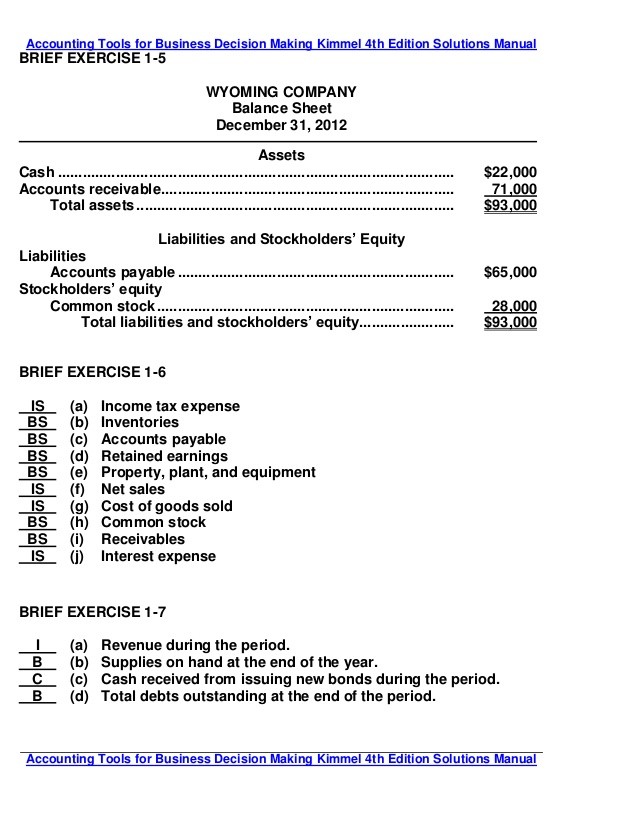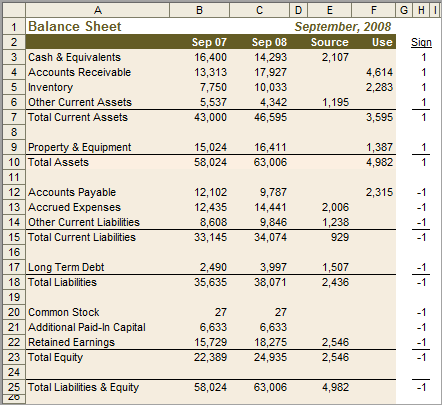How to prepare balance sheet Accounting Guide
Post on: 7 Июль, 2015 No Comment

2.1. Current assets on classified balance sheet
Current assets are cash and other assets that are expected to be converted to cash or sold or used up usually within one year or the company’s operating cycle, whichever is longer, through the normal operations of the business.
An operating cycle. for a manufacturing company, represents time it takes to invest cash by buying raw materials, produce a product, and receive cash back after selling the product. An operating cycle may be more or less than a year depending on the industry.
Current assets are usually listed in the order of liquidity starting with cash and cash equivalents.
Examples of current assets are cash and cash equivalents, marketable securities, accounts receivable, inventories, and prepaid expenses.
Cash and cash equivalents represent coins, currency, checks, money orders, money on deposit and short-term, highly liquid investments that are usually reported with cash on the balance sheet. Normally, highly liquid means that the investments can be converted to cash within 90 day and with a minimal loss in their value due to changes in interest rates.
Marketable securities are short-term (temporary) investments in securities and other interest-generating financial assets. Such investments are usually made to earn interest on excess cash which is currently not used in the business.
Accounts receivable are amounts due from customers on credit sales (i.e. sales when customers agree to pay you later).
Accounts receivable sometimes may have a related contra asset account called Allowance for Doubtful Accounts. Such an account represents the amounts that you believe may not be collectable (e.g. a customer is bankrupt). The net amount (Accounts Receivable – Allowance for Doubtful Accounts) is shown on the balance sheet.
Inventories are raw materials, work-in-process (i.e. started but unfinished products), finished goods (i.e. products ready for sale), and sometimes supplies (e.g. spare parts for your machinery and equipment).
Similar to accounts receivable, the Inventories Account may also have a related contra asset account called Excess and Obsolete Reserve (E&O Reserve). This account represents the cost of inventory that you do not anticipate to sell or use in your production any more due to technical obsolescence, etc. The net amount (Inventories – E&O Reserve) is presented on the balance sheet. Note that not all businesses will have an E&O reserve.
Prepaid assets are prepayments you’ve made that will benefit future periods.
For example, if you pay an insurance premium for your business, the coverage you obtain is for a year. Thus, the benefits you will be getting from this asset are extended over a year. Normally, prepaid assets shown in the current assets are the ones expected to be used (expected to expire) within a year after the balance sheet date. If a prepaid asset is expected to provide benefits for longer, then the portion of the prepaid asset related to benefits after one year is shown in the non-current assets (i.e. Other Non-current Assets) on the balance sheet.
2.2. Non-current assets on classified balance sheet
All assets not included into current assets are non-current (long-term) assets. They are presented on the balance sheet after the current assets and may include the following classifications: fixed assets, intangible assets, investments, and other non-current assets. Let’s review each classification in greater detail.

Fixed assets may include land, buildings, machinery and equipment, vehicles, and leasehold improvements.
Fixed assets are expected to be utilized by the company (i.e. provide benefits) over a period longer than one year. Note that fixed assets are tangible assets (i.e. have physical substance). Fixed assets, as they provide benefits, use up some of their cost.
The process of allocating this decrease in fixed assets’ cost to multiple years is called depreciation .
A contra asset account called Accumulated Depreciation keeps information about how much of the fixed assets’ cost has been depreciated. The net amount (Fixed Assets – Accumulated Depreciation) is shown on the balance sheet.
Intangible assets may include patents, goodwill, technology, customer lists, value of non-compete agreements, among others.
Intangible assets are similar to fixed assets except that the major value of intangible assets comes with the rights they bring to the owner and not their physical substance. Similar to fixed assets, some intangible assets lose their value with time as they provide benefits (process is called amortization), and this process is reflected in the Accumulated Amortization account. Note, however, that some intangible assets (e.g. trademarks or goodwill) have indefinite lives, and thus, they are not amortized.
Investments are long-term investments in securities of other companies. Such securities may be debt securities (e.g. bonds, notes receivable) or equity securities (e.g. stock).
Other non-current assets may include other long-term assets not included into the investments, fixed, or intangible assets categories. Such other assets may be portions of prepaid expenses that will start expiring in more than a year after the balance sheet date, the cash surrender value of life insurance on officers, and others.














